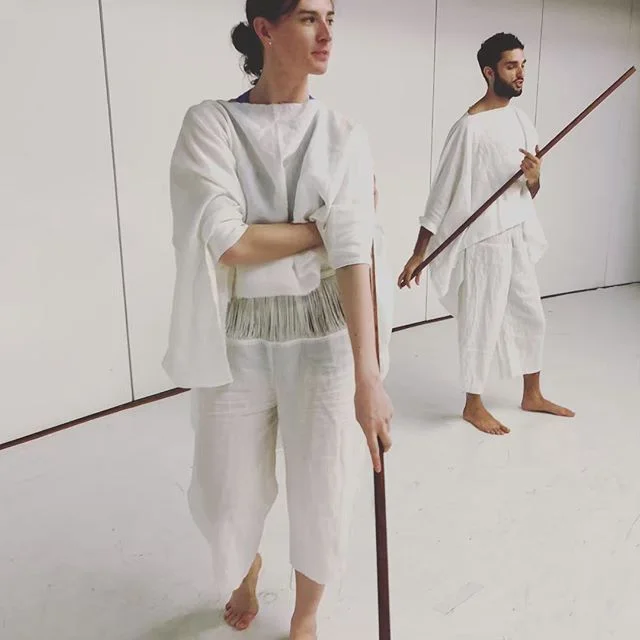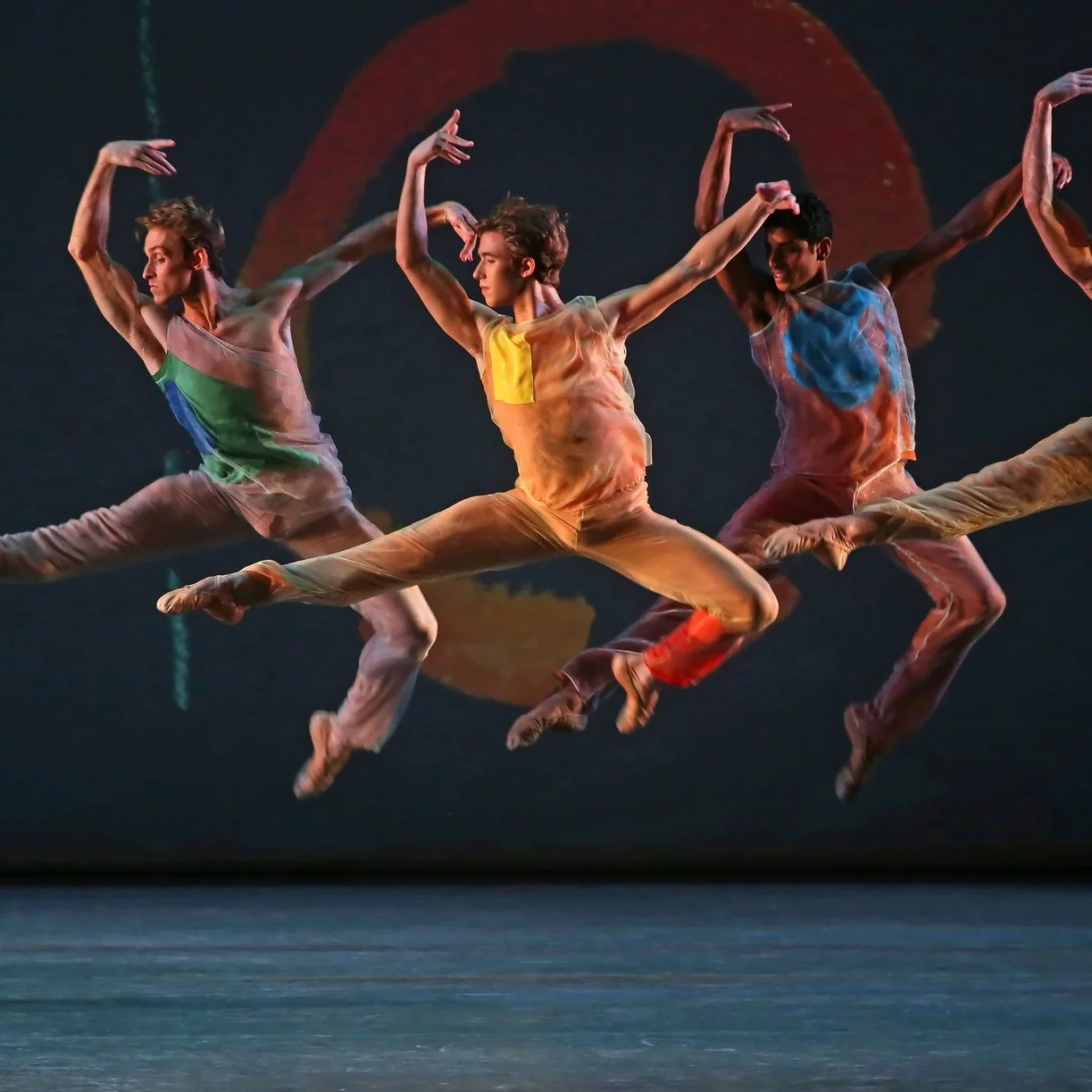21st Century Choreographers, II
Center, Sterling Hyltin, Daniel Ulbricht, and former company member Robbie Fairchild in Peter Martin’s “Hallelujah Junction” © Paul Kolnik for New York City Ballet
The second night of New York City Ballet’s spring season did not live up to the standard set by the opening, mostly due to the program’s first ballet. Though Sterling Hyltin and Taylor Stanley danced Peter Martins’ “Hallelujah Junction” beautifully, the corps lacked the ballet’s requisite dynamism and attack. The four corps men—all of whom I’ve seen give beautiful performances on other occasions—looked as if they were struggling to keep up with the more senior corps women they partnered. Though I’ve heard calls for cutting Martins’ ballets from the repertoire altogether, I struggle to accept that excluding Martins’ work entirely is the best way to address his departure and legacy. Regardless, based on last night’s performance, nothing would be lost by taking a break from his works for the time being.
Brittany Pollack, Harrison Ball, Sara Mearns, and Devin Alberda in William Forsythe’s “Herman Schmerman” ©Andrea Mohin/New York Times
“Herman Schmerman,” fresh from its performances this winter, was even stronger this time around. It was the second time I’d seen the first half, and I was once again impressed by the dancers’ stamina and technical bravado. I appreciated the manner in which Forsythe’s canons and weight shifts directed the eye through the piece in unexpected ways. Sara Mearns, Unity Phelan, and Devin Alberda all brought particular sharpness and energy to the first movement, and in the pas de deux, Megan LeCrone looked more comfortable on stage than she’s seemed to date.
I wasn’t looking forward to revisiting Matthew Neenan’s “Exchange,” which premiered this fall. While other pieces certainly could have better filled the slot in the program, focusing on stellar individual performances almost redeemed the distracting costumes (evocative of “The Handmaid’s Tale”) and discord between the choreography and the score. Adrian Danchig-Waring looked strong, elegant, and athletic, both on his own and while partnering Maria Kowroski, and Erica Pereira and Joseph Gordon brought a welcome finesse to their dancing.
Sara Mearns and Tyler Angle in Alexei Ratmansky’s “Concerto DSCH” © Paul Kolnik for New York City Ballet
Ratmansky’s “Concerto DSCH” was the star of the program. The complex balletic and choreographic vocabulary of the work is punctuated by pedestrian elements (windmilling arms, sautés with flexed feet, casual jogs around stage, dancers stepping back while onstage to watch the other dancers), references to character dance, and humor. After the intensity of Mearns’ performance in “Herman Schmerman,” I was surprised to notice the romantic introspection she brought to her pas de deux with Tyler Angle. Ashley Bouder’s spunk suits the ballet perfectly, but of the blue trio she leads, Anthony Huxley shone brightest. He matched his pristine technique and buoyant jump with the sheer enthusiasm he brought to the stage, and it was a pleasure to watch him so inhabit a role. Like Peck’s “Rodeo” the night before, the piece had the audience in the palm of its hand: Ratmansky’s steps with Shostakovich’s jaunty score elicit visible joy from the dancers, a poignant reminder of what is so special about experiencing ballet’s ephemeral beauty.





